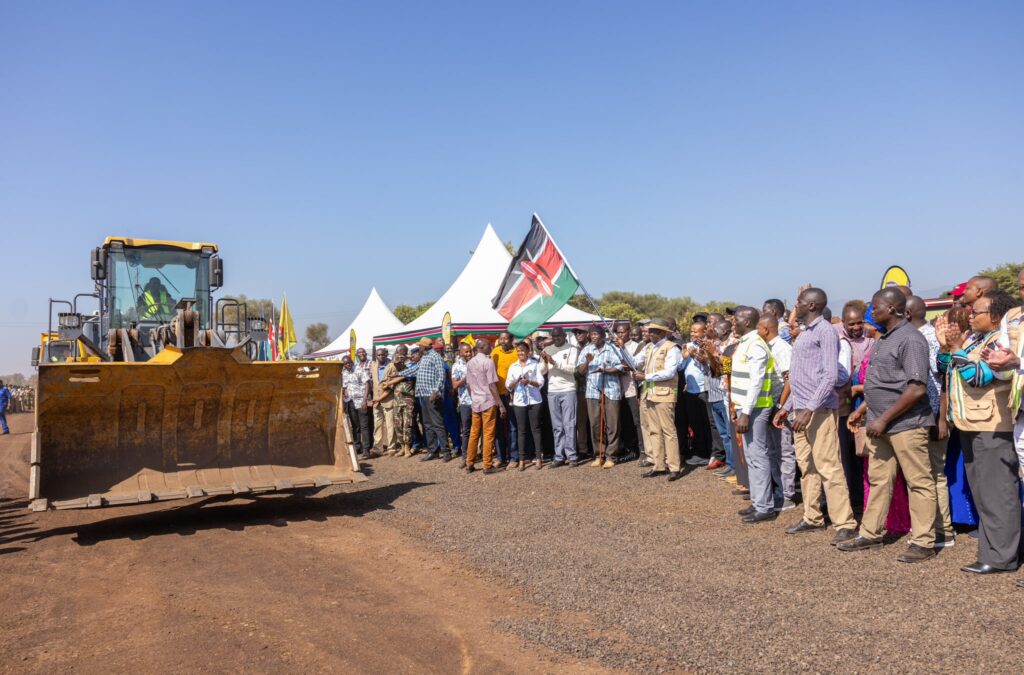Away from the political noise that dominates airwaves and social feeds, President William Ruto has been steadfast in his mission to transform Kenya—not through empty rhetoric, but by deliberate and inclusive action. From the Coast to the North, from Mt. Kenya to Nyanza, his administration is rolling out region-specific development programs that speak directly to the needs of the people. His mantra remains simple but powerful: “Let me work. Judge me by results—not noise.”
At the Coast, land adjudication efforts and investments in the Blue Economy have begun to address deep-seated historical injustices. In Nyanza, digital economy initiatives and road upgrades are thawing decades of political coldness. These are not isolated efforts—they’re part of a broader plan to unify and uplift the nation. President Ruto’s focus is on building, not bickering; his style is to deliver, not distract.
Unlike his critics, who thrive on tribal narratives and opposition for the sake of visibility, Ruto’s agenda is anchored in service. His belief is that real transformation cannot come from leaders obsessed with power games. Instead, it must come from leaders grounded in people’s needs—leaders willing to get their hands dirty, not just trend online. That is the President’s working philosophy.
Agriculture—long neglected by past regimes—is regaining its central role in the economy. Under Ruto’s leadership, farmers are harvesting not just crops, but dignity. From sugarcane bonuses in Mumias to improved pricing for milk, coffee, and miraa across the country, smallholder farmers are seeing their sweat finally rewarded. These gains reflect deliberate reforms and a return to production-led policy.
In the face of global headwinds—ranging from COVID-19 to the Russia-Ukraine conflict—Kenya’s economy has remained resilient. Inflation has dropped from 9.6% in 2022 to just 3.6% in March 2025. The shilling has stabilized, and food prices have become more predictable thanks to production subsidies. These are not coincidences—they are indicators of a focused and pragmatic leadership.

Ruto’s outreach strategy is as impressive as his development record. He has traveled across the country, launching projects and meeting wananchi where they are. From Mt. Kenya’s bustling towns to the arid corners of Northern Kenya, the President is not waiting for election time to connect with Kenyans. His grassroots presence is both a campaign and a commitment.
His recent Mt. Kenya tour, despite political friction, was warmly received—a testament to his enduring influence in the region. In Western Kenya, revived sugar factories and hospital upgrades are transforming lives. On the Coast, youth skilling programs and land reforms are bringing hope to a region once considered an opposition fortress. Ruto’s mission is clear: Every Kenyan counts.
Even in regions traditionally allied to his opponents, the President is extending an olive branch. His appearance at Raila Odinga’s aide’s funeral wasn’t just symbolic—it reflected a mature, reconciliatory leader who understands that unity is the bedrock of national progress. Political tolerance, development inclusion, and consistent engagement are forming the fabric of Ruto’s legacy-in-the-making.
As the road to 2027 begins to take shape, Ruto is not just building a campaign—he is constructing a legacy. By blending the 2007 ODM electoral footprint with UDA’s organizational machinery, he is setting up a formidable movement. If this strategy holds, it may deliver a wider margin of victory than in 2022—and more importantly, a stable, development-focused Kenya.
In the end, Kenyans will decide. But one thing is clear: President William Ruto is not sitting idle while others shout. He is working, and he is working for all Kenyans. In a nation starved of meaningful leadership for decades, Ruto’s results-driven model could be the difference between stagnation and transformation. The scorecard, as he says, will be written by the people—not the politicians.










